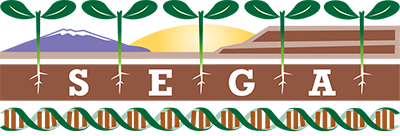You are here
NAU Awarded $4.1 Million to Study the Ecology and Evolution of Southwestern White Pine and a Non-native Pathogen in a Changing Climate

Collaborative Research: Blending Ecology and Evolution using Emerging Technologies to Determine Species Distributions with a Non-native Pathogen in a Changing Climate
Principal Investigator (PI): Kristen Waring, NAU School of Forestry, 523-4920
Co-PIs: Amy Whipple (NAU Merriam Powell Center for Environmental Research); Richard Sniezko (USDA Forest Service Dorena Genetic Resource Center); Sam Cushman (USDA Forest Service Rocky Mountain Research Station); Lluvia Flores (University of Western Australia); Heather Lintz, Christopher Still and Michael Wing (Oregon State University); Andrew Eckert (Virginia Commonwealth University)
The National Science Foundation has awarded a combined $4.1 million to Northern Arizona University and collaborating institutions to study ecological and evolutionary processes affecting the distribution of southwestern white pine, an important tree species of mixed conifer forests in the Southwest and Mexico. Collaborators at Virginia Commonwealth University, Oregon State University, the USDA Forest Service, and various institutions in Mexico form the remainder of the research team.
This work will contribute to the conservation of southwestern white pine which occurs on mountain tops in the southwestern US and in Mexico. In addition to threats from a changing climate, sustainability of southwestern white pine is threatened by a non-native tree disease, white pine blister rust. White pine blister rust causes extensive tree decline and mortality where it occurs in North America, including where it overlaps with southwestern white pine, an ever-expanding area. Climate may change too rapidly for southwestern white pine to adapt, causing mortality or potential extinction. The dual threats of climate change and invasive species make forecasting future tree distributions across continental scales an urgent challenge. Understanding how ecological and evolutionary processes interact at the continental scale to formulate the distribution of tree species on Earth is incomplete. The goal is to determine how gene movement among populations, adaptation to disease and drought, heritable changes beyond DNA mutations, and a changing environment interact to govern the success of southwestern white pine. This work will strengthen cross-border research, management efforts in forest conservation, and our understanding of how genetics shape life on Earth.
This project will develop tools to help forecast and manage the future of the species, including genomics, common gardens (trials where seedlings originating from different environments are planted together), tree disease resistance testing, engineering and technology innovation to measure drought tolerance, and computer modeling in landscape ecology and genomics. The research approach will provide a prototype for forecasting complex system behavior applicable to other systems, including those facing similar ecological challenges. The research team will use the Southwest Experimental Garden Array, a new genetics-based research platform that allows scientists to quantify the ecological and evolutionary responses of species to changing climate conditions. Disease resistance testing will take place at the Forest Service’s Dorena Genetic Resource Center in Cottage Grove, Oregon.
Theme by Danetsoft and Danang Probo Sayekti inspired by Maksimer
